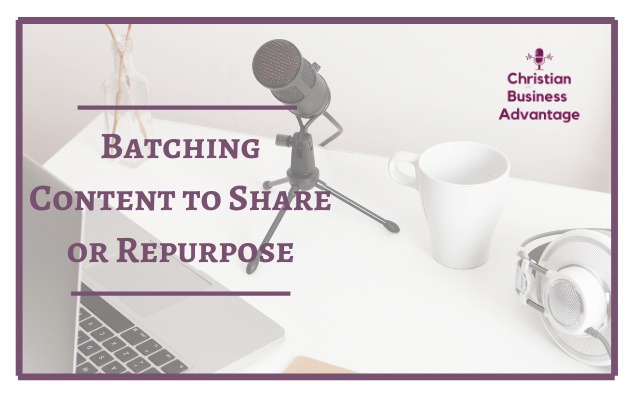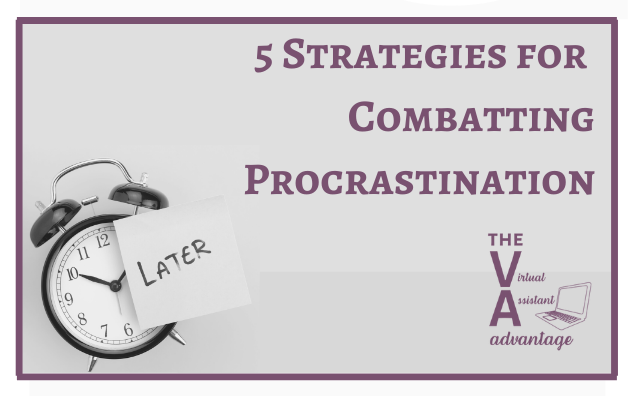How to Batch Content
Today we are going to learn how to batch content. Before we get into the training, we first need to understand what batching is. What is batching? Batching is the act of grouping tasks together. Instead of jumping between programs to do various tasks, batching allows you to do the tasks all at once. It takes more brain power to switch between types of tasks, so multitasking is not a good idea. It is more important to stay in the same frame of mind or in the same frame of thought in order to get more done. Batching helps you accomplish this. We will begin with some steps for batching content.

Step one is to start with your largest pieces of content. If you have a podcast episode, a long-form video, or a long-form blog post, you want to start with the longest content first. My shortest podcasts are about seven minutes, and my longest are about twenty minutes. Long-form videos are usually about twenty to thirty minutes. A blog post is usually about five hundred to twelve hundred words. The very first thing that I do when batching is to have long-form content in the form of a podcast or a training video.
Step two is using the long-form content that I have from step one and turning it into another long-form piece of content. For example, a podcast or video training can be transcribed into a blog post. A blog post could be read and turned into a podcast. I have a client who uses her old blog post as a podcast. These are some ways that you can interchange your content.
Step three is to break down the long-form content into smaller pieces. You can turn long-form videos into reels. You can pull quotes from blog posts and make images with the quotes. You can use the quotes to make social media posts. Find creative ways to use your long-form content into shorter pieces of content.
Now we will discuss how to put all of this into practice.
First, you will need to brainstorm your long-form content ideas. I like to start with a theme or topic for the month, for example. Every month I have a theme for the month that creates an overarching idea for the entire month, and that is the idea that I draw my content from. At the end of September, I was talking to my intern to try to determine a good theme for the month of October. She suggested that I do a play on the Halloween theme. So I went with tricks and treats for marketing online. Using this idea, I was able to come up with some different topics to go with this theme.
The second thing you will need to do is set a title for each piece of long-form content. I went ahead and set a title for each piece of long-form content that I was going to create for that month. You can decide if you want to do one per week, one per month, or however often you feel that you want to create content.
The third step is to batch record or write the content that you need. There is a subset in between the steps, which is that brainstorming is required. Outlining is good for the process. Some people will write out their entire podcast. I don’t do that. I just made an outline. I plan everything out and then on a Saturday, I will record each of my podcasts back to back. Then you are prepared to write all four blog posts for the month.
The fourth step is to batch your graphic creations. If you have a blog post, podcast, or video, then you are most likely to need something to go along with that.
Step five is: don’t just create one design at a time. Go ahead and plan out a week’s worth or a month’s worth of graphics. The best way to do this is to have a template.
Step six is: don’t start from scratch. Set up a variety of branded templates in each size that you use most often. Then, when you need to create your graphics, you simply have to change the text and the photos. I have various templates for the different content that I use, as well as different forms of social media. I don’t use the same template each time. I have various forms of each template that I rotate between so that they don’t look the same every week, but the different templates are used so that you aren’t reinventing the wheel. It makes things much easier and you can just trade out pictures and fonts to fit the topic of your new post. This also keeps things in line with your brand.
The last step is to organize. Organize your images into folders in Canva or set up a series of folders in your Google Drive. Google Drive is a great way to share folders with other team members. That way, they can utilize those graphics as well. I also organize my content by using a specific notebook for everything. I also have a spreadsheet that I use for social media. Keeping up with social media can be a task in and of itself.
Now that we have discussed the steps for batching content, let’s discuss the types of content that you can batch. The types of content that you can batch are podcast episodes, blog posts, YouTube videos or training, social media posts, and graphic content. Again, all you are doing with batching is taking various pieces of long-form content and breaking them down into smaller pieces of content. This is one of the biggest things I do for my clients. I help them batch their content and get more for their efforts by repurposing their content. This is the process I use for batching to save time and be more productive.
If I can help you in your business with batching content, please let me know. I would be happy to talk with you about how this will help you save time and be more productive in your business.
STAY CONNECTED
I have a Facebook group for Christian authors, speakers, and coaches. It’s called The Christian Business Advantage, and each month I do a FREE training around the third Wednesday of each month. Please come join our group, and you will learn tips and tricks for your business.






